-
 Facing crippling debt, the monarch of France, King Louis XVI assembles the Three Estates. Louis wishes to raise the taxes on the citizens of France, but law states that he can only do so with the approval of the Three Estates. However, what Louis did not predict was that the First Estate and the Second Estate would vote to only raise taxes on the Third Estate. This angers members of the Third Estate, who represent over 95 percent of the French population.
Facing crippling debt, the monarch of France, King Louis XVI assembles the Three Estates. Louis wishes to raise the taxes on the citizens of France, but law states that he can only do so with the approval of the Three Estates. However, what Louis did not predict was that the First Estate and the Second Estate would vote to only raise taxes on the Third Estate. This angers members of the Third Estate, who represent over 95 percent of the French population. -
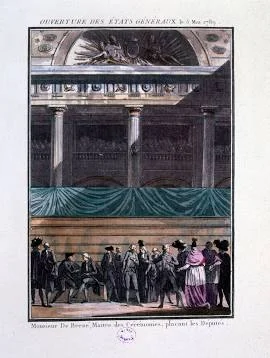 The Third Estate created the Establishment of the national Assembly new creation of tax laws and they drew away from the tax law because they didn’t want to pay the taxes of 1st and 2nd Estates. The goal of the National Assembly was to suspend the old judicial system and declare the property of the church to be the disposal of the nation because they want to declare the property of the church is to get the powers of the church and the nobility.
The Third Estate created the Establishment of the national Assembly new creation of tax laws and they drew away from the tax law because they didn’t want to pay the taxes of 1st and 2nd Estates. The goal of the National Assembly was to suspend the old judicial system and declare the property of the church to be the disposal of the nation because they want to declare the property of the church is to get the powers of the church and the nobility. -
 The Tennis Court Oath was
The Tennis Court Oath was -
 The Bastille was attacked because there were political prisoners and there were gun powder that protesters wanted to use for the fight. King Louis XVI tried to take back absolute power by building up ammunition and the prison shows how inequality that was held to the people who spoke up against the noble family and the First and Second Estates.
The Bastille was attacked because there were political prisoners and there were gun powder that protesters wanted to use for the fight. King Louis XVI tried to take back absolute power by building up ammunition and the prison shows how inequality that was held to the people who spoke up against the noble family and the First and Second Estates. -
 Declaration of the Rights of Man and of the Citizen were rights of liberty, property, security and resistance to oppression for the mens but they failed to give the women to have theirs rights and it led to tension to the women. Their were tensions between active and passive citizens throughout the Revolution that question the women’s rights to connect in a disagreement.
Declaration of the Rights of Man and of the Citizen were rights of liberty, property, security and resistance to oppression for the mens but they failed to give the women to have theirs rights and it led to tension to the women. Their were tensions between active and passive citizens throughout the Revolution that question the women’s rights to connect in a disagreement. -
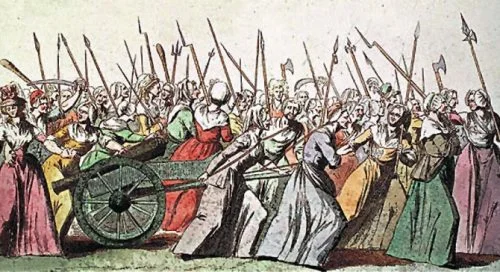 The March on Versailles was created by women in the marketplaces of Paris, who were protesting for the high price and scarcity of bread because they were having an food crisis and hungry was making them fight for their right. The Women's were seeking for liberal political reforms and mostly 7,000 people marching to the palace to confront King Louis. There was violence in the march and the palace guards were fighting with the people that were in the march, they didn't care about the people.
The March on Versailles was created by women in the marketplaces of Paris, who were protesting for the high price and scarcity of bread because they were having an food crisis and hungry was making them fight for their right. The Women's were seeking for liberal political reforms and mostly 7,000 people marching to the palace to confront King Louis. There was violence in the march and the palace guards were fighting with the people that were in the march, they didn't care about the people. -
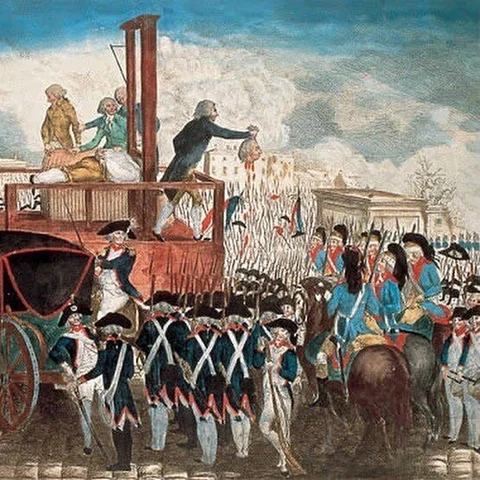 Louis XVI was the last king of France before the French Revolution, he was publicly executed by guillotine for being found guilty of treason by the National Convention. Some reason was he had was treason and conspiring his foreign powers against the French Revolution. Louis XVI death was an symbolize the end of the unbroken thousand-year period of monarchy in France and the true beginning of democracy within the nation of france.
Louis XVI was the last king of France before the French Revolution, he was publicly executed by guillotine for being found guilty of treason by the National Convention. Some reason was he had was treason and conspiring his foreign powers against the French Revolution. Louis XVI death was an symbolize the end of the unbroken thousand-year period of monarchy in France and the true beginning of democracy within the nation of france. -

-
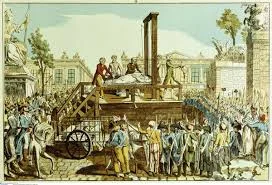 Marie Antoinette became a target of criticism by opponents the domestic and foreign policies of Louis XVI and those opposed to the monarchy in general. She was accused of various crimes, including conspiring with foreign powers, plotting against the revolution, and spending excessive amounts of money. Marie Antoinette was executed by guillotine in the Place de la Révolution (now Place de la Concorde) in Paris.
Marie Antoinette became a target of criticism by opponents the domestic and foreign policies of Louis XVI and those opposed to the monarchy in general. She was accused of various crimes, including conspiring with foreign powers, plotting against the revolution, and spending excessive amounts of money. Marie Antoinette was executed by guillotine in the Place de la Révolution (now Place de la Concorde) in Paris. -
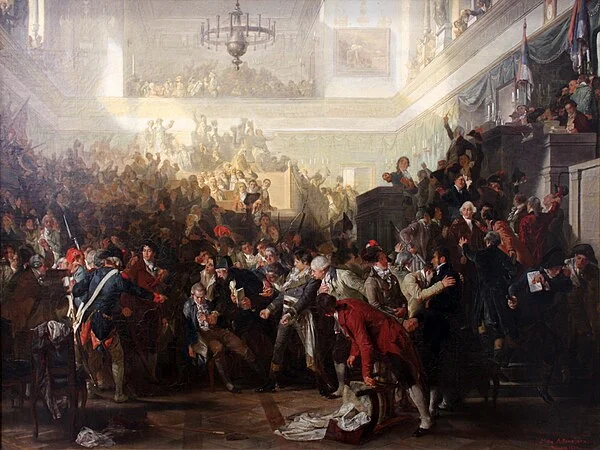 The Fall of Maximilien Robespierre gave an end of the reign of terror. Maximilien and his allies were arrested and executed because he spoke the
The Fall of Maximilien Robespierre gave an end of the reign of terror. Maximilien and his allies were arrested and executed because he spoke the -
 The Battle of Waterloo was the final battle of the French Revolution and last battle Napoleon Boneparte ever fought in. The Battle of Waterloo was fought in Belgium. Napoleon’s French forces were outnumbered by the combined armies of the English and the Prussians, led by British officer the Duke of Wellington. When Napoleon was defeated, the French throne was again given to King Louis XVIII. Napoleon was exiled to an island named Saint Helena where he died from natural causes a few years later.
The Battle of Waterloo was the final battle of the French Revolution and last battle Napoleon Boneparte ever fought in. The Battle of Waterloo was fought in Belgium. Napoleon’s French forces were outnumbered by the combined armies of the English and the Prussians, led by British officer the Duke of Wellington. When Napoleon was defeated, the French throne was again given to King Louis XVIII. Napoleon was exiled to an island named Saint Helena where he died from natural causes a few years later. -